
Froemke Lab Members
Members of the Froemke Lab study neuromodulation and plasticity of the cerebral cortex, with a general focus on the functional consequences of changes to synaptic transmission and neural circuits, in terms of behavioral improvements and enhanced sensory perception. Many of our alumni have gone on to lead their own labs at institutions across the country.
If you are interested in a postdoctoral position, please email Dr. Froemke at robert.froemke@nyulangone.org.
Principal Investigator

Robert C. Froemke, PhD
Professor, Department of Otolaryngology—Head and Neck Surgery
The Skirball Foundation Professor of Genetics, Department of Neuroscience and Physiology
Dr. Froemke received a PhD from University of California, Berkeley, and performed postdoctoral research at University of California, San Francisco.
Postdoctoral Fellows
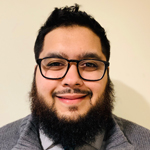
Ismail Ahmed, PhD
Dr. Ahmed received a BS in biochemistry from The City College of New York and a PhD in biochemistry and molecular biophysics from the University of Pennsylvania. Under the mentorship of Dr. Feng Gai, Dr. Ahmed’s PhD research focused on the development and application of unnatural amino acid-based probes for biological spectroscopy and microscopy. Currently, Dr. Ahmed is interested in how neuropeptides modulate neural circuits and behavior. To this end, for his postdoc he will use an interdisciplinary approach to better understand the neuromodulatory role of oxytocin in the context of social behavior in rodents. Dr. Ahmed’s work is supported by K00 award from the National Institute of Mental Health (NIMH).

Tanita Frey, PhD
As a result of Dr. Frey’s work in the Gotoh Laboratory involving the visual cortex’s nuclear responses towards visual stimulation under in vivo monitoring, Dr. Frey was granted a PhD from the University of Tokyo in pharmaceutical science. Previously, Dr. Frey received a master’s degree in neurobiology from Freie University under Dr. Craig Garner at the Deutsches Zentrum für Neurodegenerative Erkrankungen (DZNE) on NMDA encephalitis and the reconstruction of a potential therapeutic antibody. In the Froemke Lab for postdoctoral work, Dr. Frey is looking forward to focusing on the auditory learning processes in versatile interneuron subtypes as well as their different responses in layer specific manner under the usage of in vivo imaging and behavioral studies.

Ariel E. Hight, PhD
Dr. Hight studies sensory neuroplasticity in rats and humans with cochlear implants (CIs). The CI is an auditory neuroprosthesis that restores auditory sensation to the deafened ear by sending electrical currents directly to auditory nerve, mimicking the patterns of activity in the healthy ear. Upon hearing with the CI for the first time, however, human subjects report significantly distorted sound compared to later time points. Learning to hear the CI requires a rehabilitation period and is proposed to require plasticity within the central auditory system, for example via changes to synaptic transmission and neural circuits. Dr. Hight is interested in how neuroplasticity enables speech comprehension despite significantly distorted cues provided by the CI. He received a PhD from Harvard University working under Dan Polley focusing on compensatory plasticity in the auditory cortex following noise-induced high-frequency hearing loss. He is completing a joint postdoc with Mario A. Svirsky, PhD, in human CI studies.

Megan Kirchgessner, PhD
Dr. Kirchgessner received an undergraduate degree in cognitive sciences and psychology from Rice University and a PhD in neurosciences from University of California, San Diego. Dr. Kirchgessner conducted doctoral research in the lab of Dr. Ed Callaway at the Salk Institute, studying the functional diversity of different excitatory neurons in the mouse visual cortex that project to the visual thalamus. For postdoctoral research, she is interested in oxytocin’s role in postnatal development—particularly how the oxytocin system is engaged early in life and its contribution to sensory cortical development.
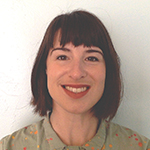
Amy LeMessurier, PhD
Dr. LeMessurier received a BSc in biology and neuroscience from MIT and a PhD in neuroscience at University of California, Berkeley, working under Dan Feldman. Her PhD research focused on how naturalistic experience shapes the fine-scale organization of sensory representations in somatosensory cortex. For her postdoc work, Dr. LeMessurier is interested in sensorimotor learning in naturalistic contexts—in particular how plasticity in sensory cortical circuits supports learning of complex behaviors by social transmission. Dr. LeMessurier’s research is supported by the BRAIN Initiative NRSA/F32 fellowship.

Kelvin Quiñones-Laracuente, PhD
Dr. Quiñones-Laracuente wants to better understand pro-social behaviors, such as socialization, maternal behaviors, and altruism. A wide range of psychiatric illnesses feature symptoms that impair social function. Understanding social brain pathways would yield new insights on how to better diagnose, treat, and prevent psychiatric illness. Dr. Quiñones-Laracuente completed MD and PhD degrees at the University of Puerto Rico School of Medicine, in the laboratory of Dr. Greg J. Quirk. For his graduate thesis, Dr. Quiñones-Laracuente studied the circuitry involved in retrieving aversive memories over time. He is now part of the physician–scientist resident track in the Department of Psychiatry at NYU Grossman School of Medicine.

Maria Clara Selles Japas, PhD
Dr. Selles Japas received a biochemistry degree from the University of Buenos Aires, Argentina. During her graduate work in the Ferreira Lab (UFRJ, Brazil), she developed an immune-gene therapy for Alzheimer’s disease; in collaboration with Dr. Froemke and Moses V. Chao, PhD, she studied the therapeutic potential of oxytocin for Alzheimer’s disease. By focusing on the oxytocinergic system during postdoctoral training, Dr. Selles Japas aims to understand how social interactions could modulate the onset and progression of Alzheimer’s disease.

Sarah Winokur, PhD
Dr. Winokur received a PhD in neuroscience from the University of Massachusetts Amherst and a BA in neuroscience from Smith College. For her doctoral research in the lab of Mariana Pereira, Dr. Winokur focused on determining neurobiological underpinnings of depression-related maternal behavior deficits. For her postdoctoral research, Dr. Winokur will use an interdisciplinary approach to continue investigating the maternal brain and behavior—particularly, how sickness and inflammation alters caregiving and associated neural function.
Graduate Students

Chloe Bair-Marshall, BS
Chloe graduated from McMaster University in Canada, where she worked with Deda Gillespie on development of the auditory brainstem. Chloe then went to University of California, San Francisco, where she worked with Alexandra Nelson on the cellular and circuit mechanisms underlying Parkinson's disease and levodopa-induced dyskinesia. For her graduate work, Chloe is interested in how neuromodulators affect inhibitory cortical interneurons to convey state-dependent information and alter sensory perception. She plans to use a combination of in vivo and in vitro electrophysiology and behavior to better understand neuromodulation of inhibition in the auditory cortex.

Asha Caslin, BS
Asha graduated from Emory University with a BS in neuroscience and behavioral biology and philosophy. While there, Asha studied potential therapeutics for TBI and stroke with Shan Ping Yu and social salience network activation in prairie voles with Larry Young. For graduate work, Asha is interested in how sickness and inflammation alter social behavior in mice. Asha plans to use a combination of behavior, optogenetics, and in vivo recording techniques to study how oxytocin modulates these social interactions.

Habon Issa, BS
Habon received a BS in biology from George Washington University. Before starting graduate school, Habon studied sleep homeostasis and social behavior with Mark Wu at Johns Hopkins University. Habon is interested in understanding how pup-related sensory cues influence oxytocin’s modulation of the basal ganglia to alter maternal motivation and related caregiving behaviors.

Naomi López Caraballo, BS
Naomi graduated from University of Puerto Rico—Mayagüez Campus with a BS in industrial biotechnology. Currently, Naomi is a graduate student studying alloparenting in mice. Specifically, she looks at how pup-naive virgin females can learn pup retrieval through visual observation. She uses a virtual environment, optogenetics, and fiber photometry to study which visual cues and how the oxytocinergic system facilitate such learning. Naomi is supported by a HHMI Gilliam Fellowship and a National Science Foundation (NSF) Graduate Research Fellowship.

Katie Martin, BS
Katie graduated from the University of Virginia in 2013 with a degree in biology. Prior to starting graduate school, Katie worked with Josh Dudman at Janelia Research Campus studying basal ganglia circuits underlying reward seeking behavior. For her graduate work, Katie is interested in how neuromodulatory signaling affects sensorimotor learning. She is using a combination of behavior and electrophysiology to study learning-related changes in cortical, striatal, and thalamic circuits. Katie is supported by an NSF Predoctoral Fellowship.

Jess Minder, MS
Jess received a BS from St. Joseph’s College, and an MS from Stony Brook University. For graduate work, in collaboration with Dr. Moses Chao, Jess is interested in studying the molecular mechanisms of cortical plasticity and functional circuit changes as a result of oxytocinergic signaling over a developmental time course using primary cortical neuron cultures and electrophysiology. Jess is supported by an NIH Training Grant.

Patrick O'Neill, BA
Patrick received a BA in psychology from Cornell University. In collaboration with Dayu Lin, PhD, he is interested in understanding how social experiences alter the function of neural circuits—particularly in the context of parental behaviors. Patrick plans to use a combination of in vivo recording techniques, functional manipulation approaches, and behavioral experiments to study sensory and conspecific representations in hypothalamic circuits. Patrick is supported by an NSF Predoctoral Fellowship.
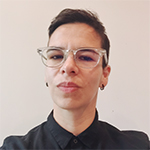
Luisa Schuster, BA
Luisa is interested in understanding the spatio-temporal dynamics of oxytocin as it modulates the neural circuits for maternal and social behavior in naturalistic settings. Luisa is currently working on documenting maternal behaviors in the nest as they are developed while, simultaneously, measuring neural activity on a long-term basis. She studied law at Universidad Externado de Colombia and received a BA in cognitive science from University of California, San Diego in 2016. Luisa is supported by an NSF Graduate Research Fellowship.
Research Staff
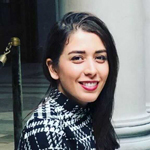
Saba Shokat Fadaei, MS
Laboratory Manager
Saba is interested in studying the connection between vagus nerve activity, social behaviors, and the gut biome. The vagus nerve is the longest nerve of the autonomic nervous system and is comprised of sensory and motor fibers. Saba’s research focus is to observe the advantages of social buffering on inflammation through the utilization of a combination of behavioral experiments, electrophysiology, and imaging methods. Saba received a master’s in biology from Brooklyn College, CUNY.

Ayat A. Agha
Research Technician
Ayat is an undergraduate student at NYU pursuing a bachelor’s in psychology. Ayat is interested in understanding the synaptic representation of infant distress cries in the auditory cortex. Ayat’s work in the lab involves measuring the acoustic features of mouse pup distress cries and using confocal imaging to measure auditory cortical synaptic distributions in female mice with and without maternal experience.

Cheyenne Oliver, BS
Research Technician
Cheyenne received a BS in biology and chemistry from the University of Maryland, Baltimore County. Cheyenne is currently working on a master’s degree from NYU. Currently, Cheyenne works with Amy LeMessurier on a collaboration project with the lab of Shy Shoham, PhD. Ultrasonic neuromodulation can be used to target and stimulate the brain noninvasively. The purpose of this project is to understand the mechanisms through which ultrasonic waves affect neural activity.
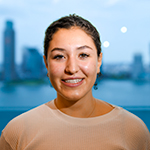
Sofia Orrey Valencia
Research Technician